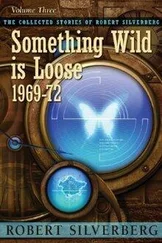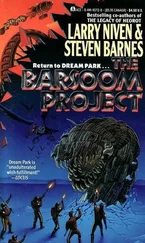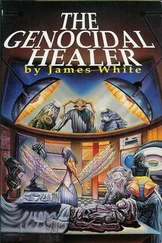Project Itoh - Genocidal Organ
Здесь есть возможность читать онлайн «Project Itoh - Genocidal Organ» весь текст электронной книги совершенно бесплатно (целиком полную версию без сокращений). В некоторых случаях можно слушать аудио, скачать через торрент в формате fb2 и присутствует краткое содержание. Год выпуска: 2012, ISBN: 2012, Издательство: Haikasoru/VIZ Media, Жанр: Старинная литература, на английском языке. Описание произведения, (предисловие) а так же отзывы посетителей доступны на портале библиотеки ЛибКат.
- Название:Genocidal Organ
- Автор:
- Издательство:Haikasoru/VIZ Media
- Жанр:
- Год:2012
- ISBN:9781421550886
- Рейтинг книги:4 / 5. Голосов: 1
-
Избранное:Добавить в избранное
- Отзывы:
-
Ваша оценка:
- 80
- 1
- 2
- 3
- 4
- 5
Genocidal Organ: краткое содержание, описание и аннотация
Предлагаем к чтению аннотацию, описание, краткое содержание или предисловие (зависит от того, что написал сам автор книги «Genocidal Organ»). Если вы не нашли необходимую информацию о книге — напишите в комментариях, мы постараемся отыскать её.
Genocidal Organ — читать онлайн бесплатно полную книгу (весь текст) целиком
Ниже представлен текст книги, разбитый по страницам. Система сохранения места последней прочитанной страницы, позволяет с удобством читать онлайн бесплатно книгу «Genocidal Organ», без необходимости каждый раз заново искать на чём Вы остановились. Поставьте закладку, и сможете в любой момент перейти на страницу, на которой закончили чтение.
Интервал:
Закладка:
I saw my mom in her hospital bed, lying sideways, eyes closed.
Embalmed, ready for her eternal sleep, and smiling.
The hatch door to my pod slid shut silently and smoothly, and the moment it sealed me off from the outside world I felt the reverberating thud of pressurization. Sound disappeared from the world, and all was darkness. This was what it was like to be buried.
Yes. I was now experiencing my mom’s death for myself. That ’s why I was suddenly so overcome with emotion, I realized. That was why this high-altitude drop, normally so routine for people in my line of work, had taken on monumental significance.
There was a high-pitched creaking sound from the outside of the pod. The cargo bay was starting to lose pressure.
“The cargo bay is now fully decompressed. Three minutes until blastoff. Release rear hatches.”
Motors roared into action, and shortly afterward the locks were opened. The Seaweed’s belly opened up. The loadmaster was buffeted this way and that by the air currents streaming in through the open hatch, but those of us inside our pods heard and felt nothing.
“One minute until blastoff. Commence countdown.”
I wondered if this was how my mom went too. Being shut off from the light as the casket finally closed, then sealed into place with nails. On the journey to who-knows-where, trapped shut inside a box, buried for all eternity. Is that what happened to Mom—to all people, anywhere, since time immemorial when people first started sealing their dead in caskets?
The countdown continued inside my mind, but I wasn’t feeling the exhilaration I usually did just before a drop.
“We have blastoff. Godspeed to you all.”
I heard the thud that came with release: both heavy and gentle at the same time. Then gravity disappeared.
I was at the mercy of the laws of physics. Specifically, the law of gravity.
3
My coffin hurtled through the empty skies.
For a few seconds my equipment seemed to float all around me. Then the computer-guided descent kicked in, ending the free-fall section of the flight. The pods we were in had no propulsion mechanism. They were equipped with neither fuel nor engine. The trajectory could only be modified by external stability wings, on the same principle as hang gliders. They were piloted by changing the angles of fins on the wings—somewhere between a glider and a smart bomb. A smart bomb with a human stuffed inside where the explosives usually go.
The flying coffin wove its way through the currents, the wings skillfully guiding it toward its destination. The wings were made of living muscle tissue. In fact, the flying coffin that I was currently riding in—the Intruder Pod, to give it its official name—hardly contained any mechanical parts at all. Or rather, it was maybe easier to say that it was made almost entirely of living flesh. Not only could the pod control the wings, it was covered with cysts that were able to contract at will, causing the actual shape of the pod to warp so that it could adapt to and cut smoothly across the turbulent air currents.
The vibrations and the noise from the air hitting the pod started to die down. The angle of descent was growing less steep, and I could sense how the trajectory was being fine-tuned by the way the center of gravity started to shift. It looked like the pod was entering the final stage of its guidance mode.
I heard another thud, and suddenly my body weight was pressing down on my legs again. The drogue chute had opened up and absorbed most of the propulsive force. We were probably only a few meters from the earth by now. I braced myself for impact. That was about all you could do in one of these caskets. The pod’s speed completely killed, it was now falling to the ground.
Most of the shock on landing was absorbed by the drogue chute and the living tissue of the hull. The pod descended as gently as a falling dandelion spore. It was a bit like attaching a parachute to a ballpoint pen. The cylindrical pod hit the ground and then fell over to one side. The way the hull was built meant that it was weighted to one side, so there was not too much chance of it rolling on and on—and screwing up the soldier’s sense of balance in the process—unless its occupant was unlucky enough to land on one hell of a slope.
I hadn’t been unlucky, and it looked like my pod was now at rest. I released the lock and placed my hand on the hatch. I pushed the square door gently outward. Last time I had looked out it was at the ceiling of the Flying Seaweed Craft. Now I found myself looking up at a starry night sky.
After emerging from our pods and confirming that our positions were secure, we got to work in silence. Williams’s pod had landed not forty feet away. The other two guys were both within a four-hundred-foot radius. With smart bombs guided by GPS or laser or drones, you’d expect at least half of them to fall within the target radius; we were working at a level above all that. We never miss could have been our motto, even if it sounded a bit corny. But it was true that our technology for guided descent was about as good as it gets.
We put the pods into self-destruct mode, and the living tissue cultures had their supply of special enzymes cut off, resulting in quick cell death and rapid disintegration. The desiccated pods were like ancient Egyptian mummies, keratinized like ancient skin. We could now leave the husks to crumble, safe in the knowledge that before long they would be nothing more than fertilizer for the grassy plains on which they now lay.
All there was left for us to do was to get rid of the handful of mechanical parts not integrated into the pods’ biological structures. Even these parts were fully modularized though, and the clean-up operation was simple. We were finished in less than ten minutes. We were like teenagers dutifully tidying up after a campfire, silently removing all traces of clues that we had ever been there.
Only difference was, for us the party was just getting started …

We put our plan into action the second we finished our clean-up.
We needed to have everything finished before dawn broke. Assassination’s not really a daytime job. Ideally you want nobody to see you—including the target.
It was a four-man team: Williams, me, and two others. We’d all been in this scenario plenty of times—no greenhorns here. We followed the plan set by SOP: Alex, the skilled tracker, was the forward scout, and Leland, who graduated in the same class as Alex, on rearguard duty. Williams and I pushed through the darkness in the middle, keeping a vigilant lookout on either side.
I make it sound simple now, but truth be told, a nighttime stealth march ain’t easy. Easier than it used to be, of course, thanks to the technology that we were blessed with these days. The snug inner lining of our clothes absorbed the moisture we perspired and wicked it away to be recycled, and the nanolayer surgery coated our eyeballs with a film that not only auto-adjusted ambient light levels so that we could see clearly even on a cloudy midnight such as this one, but also projected useful combat data straight to our retinas.
Even with these developments, it still wouldn’t do just to land the Intruder Pods right next to our target and have at them. The basic precepts of special ops remained unchanged: you still needed to land some distance away from the target, replete with guns and explosives and other useful goodies, and then get marching. Considering how varied special ops work was supposed to be, we sure did spend a lot of time walking—at least, that’s how it seemed to me. Our job was to walk and walk and walk and then finally, at the end of it all, close in on the target. The first part of selection for joining our outfit involved them strapping a huge Bergen rucksack to your back, filling it with rocks, and sending you on an extended forced march at breakneck speed. This separated the men from the boys, all right—most applicants were weeded out at this stage.
Читать дальшеИнтервал:
Закладка:
Похожие книги на «Genocidal Organ»
Представляем Вашему вниманию похожие книги на «Genocidal Organ» списком для выбора. Мы отобрали схожую по названию и смыслу литературу в надежде предоставить читателям больше вариантов отыскать новые, интересные, ещё непрочитанные произведения.
Обсуждение, отзывы о книге «Genocidal Organ» и просто собственные мнения читателей. Оставьте ваши комментарии, напишите, что Вы думаете о произведении, его смысле или главных героях. Укажите что конкретно понравилось, а что нет, и почему Вы так считаете.












